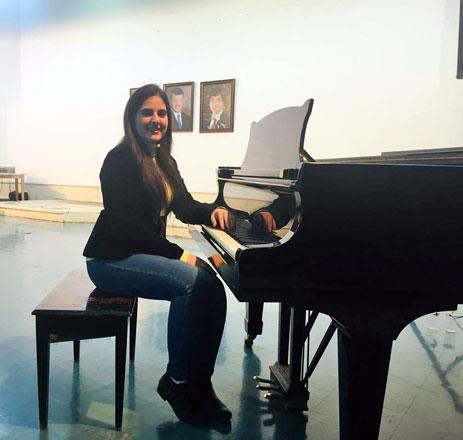You are here
From Fusha to Levantine: Adapting Arabic instruction to student needs
By Saeb Rawashdeh - Oct 16,2024 - Last updated at Oct 16,2024

Andrea Flinn elaborates why the Levantine Arabic is more studied by non-native speakers who live in Jordan and the region on Sunday at American Centre of Research (Photo courtesy of ACOR)
AMMAN – Arabic language instruction has traditionally focused on Modern Standard Arabic, but there is growing demand for proficiency in the Arabic dialects among students and employers, including the Levantine dialect spoken in Jordan, Lebanon, Palestine and Syria. In order to introduce Arabic non-speakers to the Levantine dialect, the new books should be developed as well as other pedagogical material.
“There is a demand from students and employers for the Levantine dialects,” said Andrea Flinn from Iowa State University at the lecture "How Can Large Collections of Machine-Readable Data Support Arabic as a Second Language in the Classroom?” held at the American Centre of Research.
"There is a demand for Arabic in general and we can see that here," Flinn said adding that Arabic is one of top ten languages studied at the US universities, and since 1990 it has been the six -fold increase in the number of enrolments.
There is a sharp increase in number of language centres in Amman that teach Arabic to the expat communities and students from abroad. During the Arab Spring, the number of students of Arabic language increased and it was a shift in the type of the Arabic dialect that has been studied.
"For generations, non-native speakers studied Fusha because they were interested in being able to translate and read scholarly texts, but now, this has changed," said Flinn.
Eighty per cent of students study the language to communicate orally with native speakers. Humanitarian workers also need to know the local dialects because 6.5 million Syrians are displaced due to the conflict.
Recently, more institutes in Amman are opened as well as textbooks for Levantine Arabic.
In her research, Flinn has been focused in more frequently used words and idiomatic expressions, adding that frequency was not always the main concern of instructors or textbooks authors. Flinn collected two and a half million words in the Levantine dialect and as source she used films, TV series, podcasts and novels.
She consulted native speakers to tell her how often they use some of phrases and words in daily life.
"I spoke with ten individuals who use or produce this content," she said, adding that after she collected a data base of 2,5 million words she compared it to the population of Jordan, Lebanon, Syria and Palestine.
Flinn used the software WordCruncher to perform the analysis and one of the most appropriate for the research was frequency-based analysis.
"The reason why it was appropriate was that it was made to identify vocabulary words to teach in the classroom," Flinn said, adding that this analysis offers the manageable adjustments that can be made to existing textbooks and it can guide the creation of new materials so that students are taught the words that occur frequently that will help them understand more of what they hear and what they see," Flinn concluded.
Related Articles
AMMAN — Marking World Arabic Language Day, which is celebrated every year on December 18, Jordanians express their mother tongue’s importanc
AMMAN — The political, social and intellectual “indifference” of Arabic speakers towards their language puts the once historically renowned
AMMAN — Through her passion for music, Maria Haddad, a young Jordanian woman has been inspiring many others, according to the head of the Aj


















